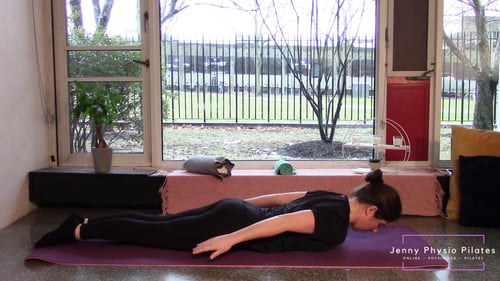These simple exercises can be done at home to help you keep your back mobile!
1. Roll Down
a) Stand up tall with your feet about hip distance apart and a soft bend in your knees.
b) Start to walk your eyes down the wall in front of you and along the floor until your chin is close to or at your chest.
c) Start to round you upper back and shoulders as you imagine you are peeling your spine off a velcro wall behind you one piece at a time.
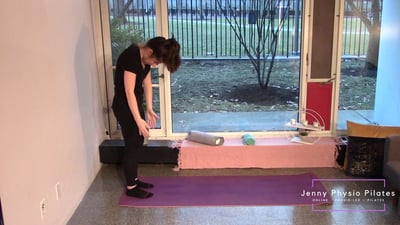
d) Leading with your arms (like they are heavy weights) continue to peel your spine off that imaginary velcro wall behind you. Rounding your upper back, mid-back and eventually your lower back.
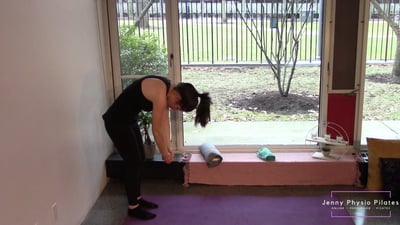
e) Lower yourself as close to the floor as you feel comfortable going. Let your body hang heavy (like a Rag Doll).
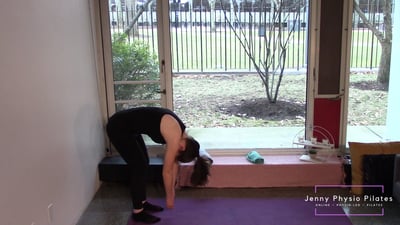
f) If you feel tension in the back of your legs bring your weight towards the front of your feet.
g) Slowly roll yourself back up into standing.
h) Repeat 3 times.
2. Cat Stretch
a) Starting on your hands and your knees, bring your chin towards your chest.
b) Round your shoulders and your upper back, then round your mid-back, your lower back and lastly tuck your tailbone underneath you.
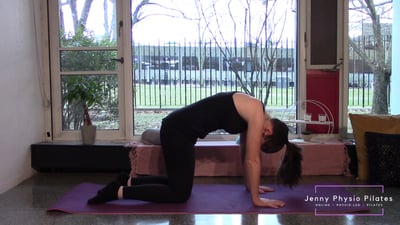
c) Then start to go the opposite direction - stick your bum up towards the ceiling, drop your stomach, drop your chest and look out in front of you.
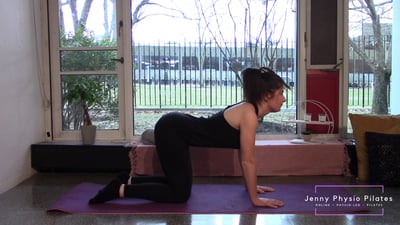
d) Repeat this cycle 3 times.
*Members of JennyPhysioPilates click here to see a detailed video on how to do the exercise correctly & how to make adjustments for certain injuries or issues.*
3. Hip Stretch
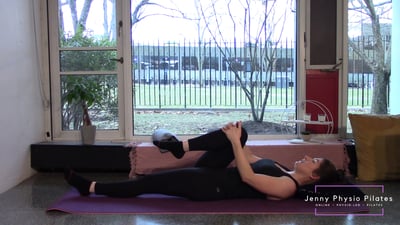
a) Lie on your back and hug your right knee towards your left shoulder. You should feel this stretch in the outside/back of your right hip. Hold for 20-30 seconds.
b) Repeat on the opposite side.
*Members of JennyPhysioPilates click here to see a detailed video on how to do the exercise correctly & how to make adjustments for certain injuries or issues.*
Note: You should not feel any pain doing these exercises. You may feel the area working or stretching but it should not be painful - please stop the exercise immediately if pain occurs.




